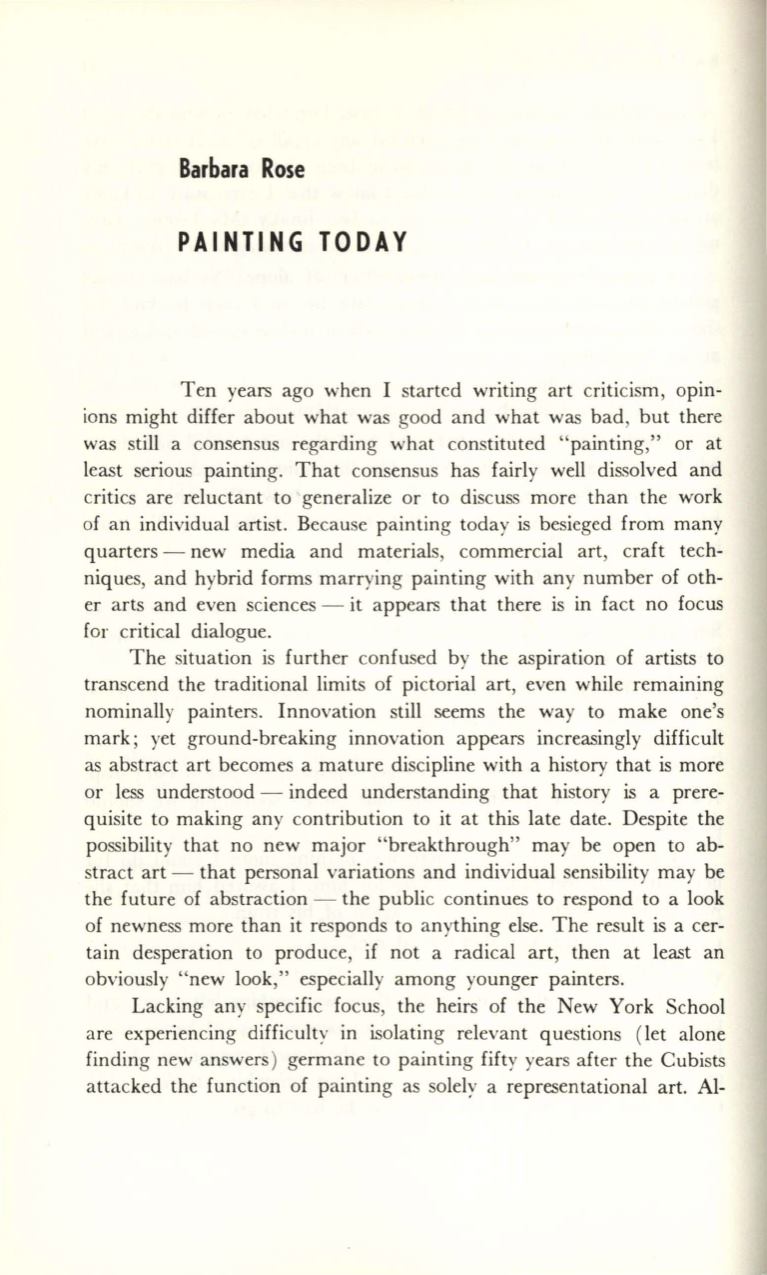
Barbara Rose
PAINTING TODAY
Ten years ago when I started wntmg art cntJClsm, opin–
ions might differ about what was good and what was bad, but there
was still a consensus regarding what constituted "painting," or at
least serious painting. That consensus has fairly well dissolved and
critics are reluctant to generalize or to discuss more than the work
of an individual artist. Because painting today is besieged from many
quarters - new media and materials, commercial art, craft tech–
niques, and hybrid forms marrying painting with any number of oth–
er arts and even sciences - it appears that there is in fact no focus
for critical dialogue.
The situation is further confused by the aspiration of artists to
transcend the traditional limits of pictorial art, even while remaining
nominally painters. Innovation still seems the way to make one's
mark; yet ground-breaking innovation appears increasingly difficult
as abstract art becomes a mature discipline with a history that is more
or less understood - indeed understanding that history
is
a prere–
quisite to making any contribution to it at this late date. Despite the
possibility that no new major "breakthrough" may be open to ab–
stract art - that personal variations and individual sensibility may be
the future of abstraction - the public continues to respond to a look
of newness more than it responds to anything else. The result is a cer–
tain desperation to produce, if not a radical art, then at least an
obviously "new look," especially among younger painters.
Lacking any specific focus, the heirs of the New York School
are experiencing difficulty in isolating relevant questions (let alone
finding new answers ) germane to painting fifty years after the Cubists
attacked the function of painting as solely a representational art.
AI-


